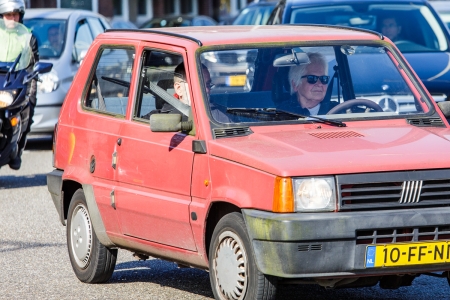Functional limitations and age-related disorders do not automatically lead to unsafe traffic behaviour. Other characteristics of elderly road users can prevent safety problems. Among these are the insight into one's own limitations, driving experience, and compensation behaviour such as driving when the roads are less busy or when it is daytime and dry. One can think of various reasons for the elderly being well able to compensate for their limitations. In the first place they often have more freedom in choosing the moment to travel. Various studies have shown that the elderly more often choose to drive during daytime and in dry weather conditions. In the second place, the elderly on average have much driving experience. The traffic insight they have acquired may give them the ability to anticipate on possible problem situations. In the third place, the diminishing desire for excitement and sensation when getting older possibly plays a role. In conformity with this the elderly, on average, drink-drive less often than younger adults and generally obey the traffic rules more (Brouwer & Davidse, 2002). However, the ability to compensate is limited for drivers suffering of dementia, a cognitive functional limitation that often comes with ageing. For example, they tend not to avoid hazardous traffic situations. This is due to the fact that they fail to have an accurate insight in their own disorder, which often stands in the way of assessing what they can or cannot do. Therefore, they cannot adjust their behaviour to the situation (Davidse et al., 2010).
A good fitness to drive test makes it possible to select those people whose physical and/or mental functioning prevents them from driving a car safely. The problem is that we do not very well know yet which functional limitations lead to an increased crash rate, and the extent to which these limitations can be compensated by (technical) aids. Presently, fitness to drive research specifically focuses on the relation between functional limitations and crash involvement (i.e. which functional limitations increase the crash involvement rate), on continued developing of tests to assess the fitness to drive, and on developing of compensation strategies that make it possible to safely participate in traffic in spite of functional limitations (e.g. extra head and eye movements to compensate for a limited field of vision). Furthermore, there is discussion in the Netherlands about whether the age-related medical test which is compulsory at present, cannot be done faster and cheaper, or maybe even be abandoned altogether. In all cases it remains important that there is a good procedure which determines when an individual can no longer drive a car safely, irrespective of his or her age. This requires further professionalization of the testing process. SWOV’s opinion can be found in Vlakveld & Davidse (2011).
A test procedure that results in people losing their driving licence when they can still drive a car safely is undesirable for a variety of reasons. As Table 1 shows, the fatality rate for elderly cyclists and pedestrians is many times higher than for elderly drivers. Consequently, elderly road users are safer in a car. In addition, the elderly often have already stopped cycling, partly because of loss of balance. Therefore, a farewell to their car often is also a farewell to part of their social lives. This can have negative consequences for the well-being of the individual, but also for society as a whole (e.g. the extra costs of door-to-door community transport). And all this while the elderly who still drive are no disproportional danger to other road users. They are more often severely injured themselves (killed or hospitalized) in a collision with another car than that they, as a driver, cause severe injury to another road user (drivers or other types of road user). For the younger adult it is the other way round: as a driver they more frequently cause severe injury than that they are severely injured in a crash with another road user, be it as a driver or other road user (Davidse, 2007).
